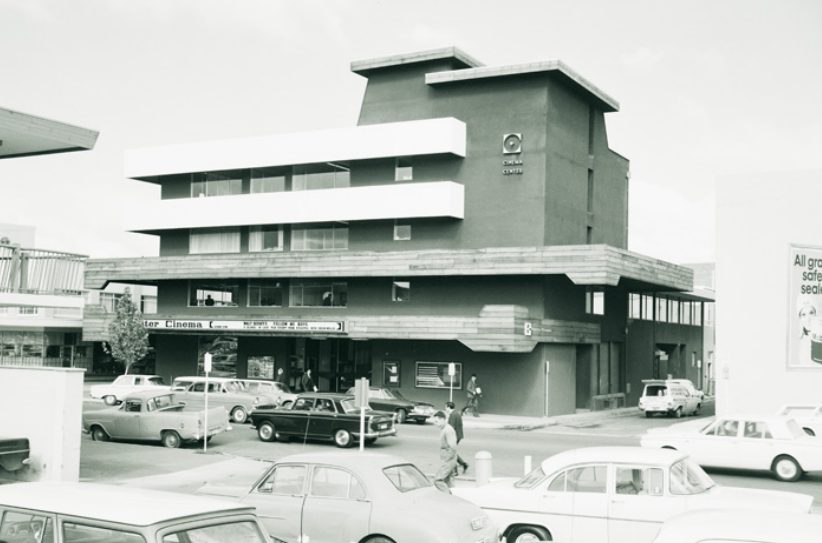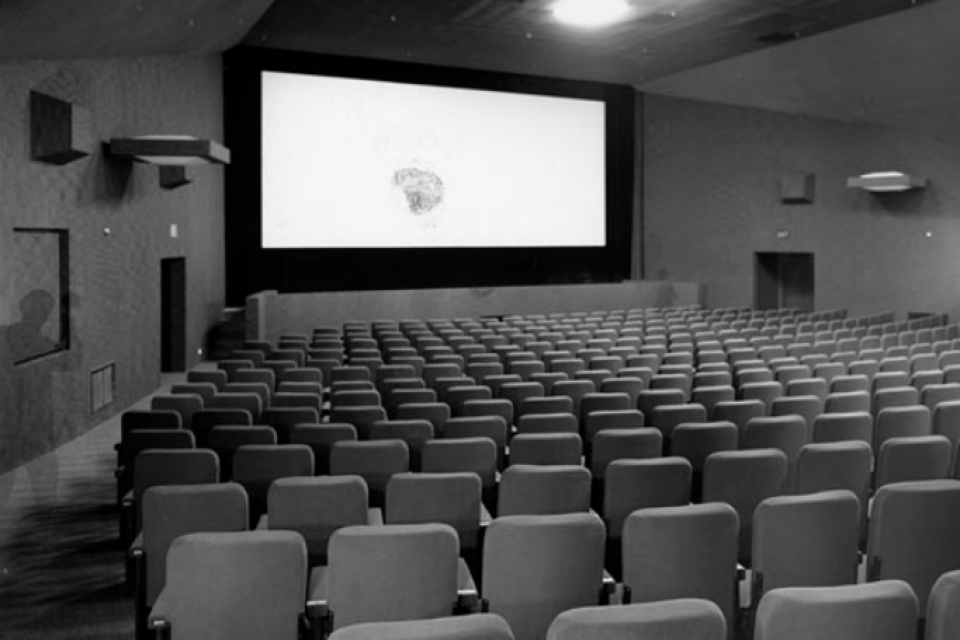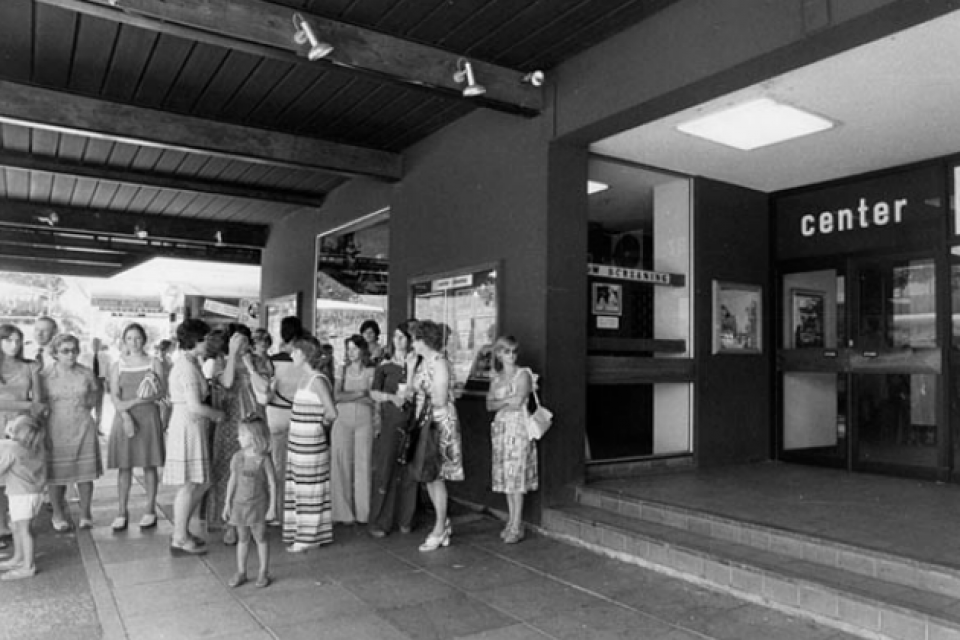
The Cinema Center in Civic: culturally and architecturally significant. Photos: ACT Heritage Council.
The ACT Heritage Council has begun the process for the Cinema Center building on Bunda Street in Civic to be heritage listed.
The Council recently provisionally registered the four-storey building, designed by iconic Canberra architect Dr Enrico Taglietti, opening comment from the community.
The 500-seat, basement Center Cinema officially opened on 5 October 1966 and played an important role in Canberra’s cultural life for 37 years, until it closed on 1 June 2003.
ACT Heritage Council chair David Flannery said the Institute of Architects had nominated the building in 2018, citing Taglietti as one of only two architects in Canberra to have won the Institute’s Gold Medallion, as well as designing a number of important buildings across Canberra.
Taglietti designed the building at the behest of developer Dr Darrell Killen and it remains as one of his culturally influential private, commercial commissions.
The constrained site and planning rules led Taglietti to opt for an underground cinema, and his innovative design involved an early, possibly the first, example of the use of Vierendeel trusses, usually used in bridges or factory roofs, to achieve a large free span basement in Australia.
The rest of the building housed restaurants, retail, a gallery, and offices, including Taglietti’s.
The statement of historical significance says the independent cinema provided high quality and culturally diverse entertainment for the burgeoning Canberra population, and has a strong association with the development of cinema entertainment and attendance in the ACT.
Mr Flannery said it had a great following for showing art house films that were not being brought out by the mainstream cinemas.
It was also influential in the establishment of an independent cinema industry, and led directly to development of the Boulevard Red and Blue Cinemas (later Electric Shadows) in 1973, an independent cinema which followed a similar business model with a focus on quality films.
The American spelling ‘center’ was adopted, Killen said, to avoid imitation of the many other ‘centres’ recently opened in Canberra, such as Canberra Theatre Centre, Griffin Centre, and Civic Centre.
The cinema auditorium, box office, showings signage and projection room are no longer but the building name, ‘Cinema Center’ signage, recessed front entry, and deep ground floor awning characterise mid-20th century cinema buildings, and serve as a visual reminder of the important role of the Cinema Center in the cultural life of the ACT.



Mr Flannery said the council would take on board the community’s comments and likely make a decision in the first quarter of next year.
He said the Council had no fears for the building despite the gathering pace of redevelopment in the city, with the owners intending to keep it within the family. They are currently doing repairs and fitting out the upper floors with a view to converting the building into a boutique hotel.
”We’re not concerned about redevelopment of the building. [The owners] appreciate the value of the building in terms of its external character but internally they’d like to do a bit of rehabilitation and renovation to make the place more usable and a better commercial opportunity,” Mr Flannery said.
The cinema opened with the Canberra premiere of Dr Zhivago to a full house, and became a regular venue for premieres of Australian films including Journey Out of Darkness in 1967 attended by Prime Minister Harold Holt and Zara Holt, the Governor-General Lord Casey and Lady Casey; and the world premiere of We of the Never Never in 1982, when Malcolm Fraser made one of his last public appearances in Canberra as Prime Minister.
In 1977, a fire destroyed much of the original cinema interior and it was refurbished.
From 1978, the cinema ran 11:20 pm Sunday screenings of ‘Chinese’ (Hong Kong and Taiwanese) movies, with film star Jackie Chan’s own father Charles and possibly his mother Lee-Lee, both of whom worked at the United States Embassy in Yarralumla, known to attend.
Between 2004 and 2018, Academy Nightclub occupied the basement, followed in 2019 by Fiction Club (FCTN), a multi-purpose entertainment venue.
The Canberra Museum and Gallery (CMAG) holds several items from the Center Cinema’s history in its collection, including programs, signage and a row of seating.
Comments close on 15 December and can be sent to the Council at heritage@act.gov.au or via the yoursay website.












